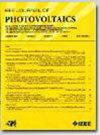Development of a Fault Detection and Localization Algorithm for Photovoltaic Systems
IF 2.5
3区 工程技术
Q3 ENERGY & FUELS
引用次数: 0
Abstract
Photovoltaic systems provide electrical power with reduced emissions at competitive costs compared to legacy systems. A low or medium voltage dc distribution system is usually used for solar integration. In dc systems, parallel and series arc faults are a safety concern. Thus, reliable and timely detection and mitigation of arc faults are critical. DC arc detection methods typically use time or frequency spectrum variations of the circuit current or voltage to differentiate the arcing event from other system events. Since practical systems include power electronics and maximum-power-point tracking, any detection scheme must perform robustly in the electrical environment that these components establish in the dc power system. A capacitor placed in parallel with the main system is an effective sensor for series arc fault detection and localization applicable in this complex electrical environment. This article shows that the analysis of the amplitude, polarity, and spectrum characteristics of the capacitor current and voltage resulting from perturbations caused by the arc provides an effective method to identify and localize faults. The detection accuracy of the proposed approach is 98.3% and the localization accuracy rate is 100% for the correctly detected faults.光伏系统故障检测与定位算法研究
与传统系统相比,光伏系统以具有竞争力的成本提供减少排放的电力。太阳能一体化通常采用低压或中压直流配电系统。在直流系统中,并联和串联电弧故障是一个安全问题。因此,可靠、及时地检测和减轻电弧故障是至关重要的。直流电弧检测方法通常使用电路电流或电压的时间或频谱变化来区分电弧事件与其他系统事件。由于实际系统包括电力电子和最大功率点跟踪,因此任何检测方案都必须在这些组件在直流电源系统中建立的电气环境中可靠地执行。在这种复杂的电气环境中,与主系统并联的电容器是一种有效的串联电弧故障检测和定位传感器。分析电弧扰动引起的电容电流和电压的幅值、极性和频谱特征,为故障的识别和定位提供了有效的方法。对于正确检测到的故障,该方法的检测准确率为98.3%,定位准确率为100%。
本文章由计算机程序翻译,如有差异,请以英文原文为准。
求助全文
约1分钟内获得全文
求助全文
来源期刊

IEEE Journal of Photovoltaics
ENERGY & FUELS-MATERIALS SCIENCE, MULTIDISCIPLINARY
CiteScore
7.00
自引率
10.00%
发文量
206
期刊介绍:
The IEEE Journal of Photovoltaics is a peer-reviewed, archival publication reporting original and significant research results that advance the field of photovoltaics (PV). The PV field is diverse in its science base ranging from semiconductor and PV device physics to optics and the materials sciences. The journal publishes articles that connect this science base to PV science and technology. The intent is to publish original research results that are of primary interest to the photovoltaic specialist. The scope of the IEEE J. Photovoltaics incorporates: fundamentals and new concepts of PV conversion, including those based on nanostructured materials, low-dimensional physics, multiple charge generation, up/down converters, thermophotovoltaics, hot-carrier effects, plasmonics, metamorphic materials, luminescent concentrators, and rectennas; Si-based PV, including new cell designs, crystalline and non-crystalline Si, passivation, characterization and Si crystal growth; polycrystalline, amorphous and crystalline thin-film solar cell materials, including PV structures and solar cells based on II-VI, chalcopyrite, Si and other thin film absorbers; III-V PV materials, heterostructures, multijunction devices and concentrator PV; optics for light trapping, reflection control and concentration; organic PV including polymer, hybrid and dye sensitized solar cells; space PV including cell materials and PV devices, defects and reliability, environmental effects and protective materials; PV modeling and characterization methods; and other aspects of PV, including modules, power conditioning, inverters, balance-of-systems components, monitoring, analyses and simulations, and supporting PV module standards and measurements. Tutorial and review papers on these subjects are also published and occasionally special issues are published to treat particular areas in more depth and breadth.
 求助内容:
求助内容: 应助结果提醒方式:
应助结果提醒方式:


